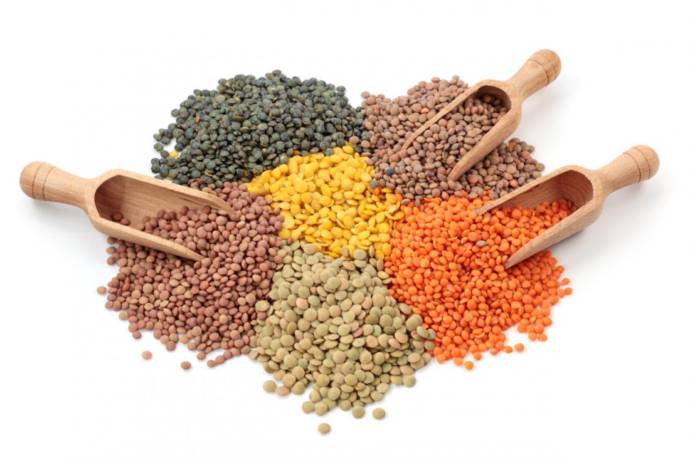What is fiber?
Fiber was considered to be an inert part of food, passing undigested from mouth to anus and expelled intact in the stool.
This view has been revised and the term ‘fiber’ now encompasses complex carbohydrates and natural polymers such as cellulose and woody plant lignin, as well as pectin and various gums (guar, Arabic, agar, carrageenan) and psyllium, and many others not yet identified.
Far from being inert, different fibers exert different bodily effects. Fiber is often divided into two broad classes: insoluble and soluble forms.
Wheat bran, for instance, is an insoluble form that is a good stool-softener but a poor absorber of cholesterol, a function that the soluble form, oat bran, does better.
When and how much fiber should you take?
Women need 25 grams per day and men should get 38 grams per day, according to an Institute of Medicine formula based on getting 14 grams of fiber for every 1,000 calories
Add more plant foods to your diet – vegetables, beans, fruit, whole grains, and nuts – can help and is one of the major recommendations by health professional.
These foods are all naturally rich in nutrients, including fiber, and provide all the health benefits that go along with a fiber-rich diet.
Top sources of fiber are: beans (all kinds), peas, lima beans, soybeans, chickpeas, black-eyed peas, artichokes, whole wheat flour, barley, bulgur, corn meal, bran, raspberries, blackberries, and prunes.
Good sources of fiber include: lettuce, dark leafy greens, broccoli, okra, cauliflower, sweet potatoes, carrots, pumpkin, potatoes, corn, snap beans, asparagus, cabbage, whole wheat pasta, popcorn, nuts, raisins, pears, strawberries, oranges, bananas, blueberries, mangoes, and apples.
Avoid refined grains – Such as white flour, white pasta, and white rice — and replacing them with whole grains is a great way to boost the amount of fiber in your diet. The Dietary Guidelines recommend at least half your grains be whole grains, but more is better
Normalizes blood sugar
Your blood sugar goes up after eating a meal. Sugary snacks and simple carbohydrates, such as white bread, increase your blood sugar more than a healthy meal packed with fiber-rich foods.
Fiber works to stabilize your blood sugar and keep it within acceptable parameters by reducing the speed at which your body breaks down carbohydrates and releases glucose into your bloodstream.
Weight management
Eating fruits, vegetables and whole grains help you control your weight. The ADA notes that the body processes fiber more slowly than simple sugars. This slow processing time helps your body maintain a feeling of “fullness.
When you do so you are not tempted to fill up on sugary, calorie-laden snacks that contribute to weight gain. In addition, fiber-rich foods are also very low in calories and fat.
Maintains low cholesterol
Your body contains two types of cholesterol HDL, or “good,” cholesterol and LDL, or “bad,” cholesterol.
The National Institutes of Health warns that high LDL cholesterol levels contribute to heart disease by building up on the walls of your arteries. Over time, this cholesterol buildup slows blood flow to your heart and can cause chest pain or heart attacks.
While weight, age, physical activity levels and heredity all play a role in determining your LDL cholesterol levels, eating a diet rich in fiber helps eliminate excess LDL cholesterol from your blood.
Helps in intestinal health
Fiber is not completely digested by the time it reaches your intestines. Once it reaches this point, it ferments within your large intestine and promotes the growth of beneficial intestinal bacteria.
As fiber passes through your system, it absorbs excess water within your gastrointestinal tract. This adds additional weight to your stool, making it easier to pass. In this way, fiber helps regularity and reduces constipation.
Artichokes
Total dietary fiber: 10.3 grams of fiber per medium artichoke
Notable nutrients: Vitamins A, C, E, B, K, Potassium, Calcium, Magnesium and Phosphorous
Adding artichokes in your diet is a great thing as it has low calorie content, loaded with fiber and all other important nutrients.
Eating only one medium sized artichoke will provide half the required amount of fiber which is needed for woman and a third of the required fiber for men. Also, artichokes are considered in the top 10 list of high antioxidant content food.
Acorn squash
Total dietary fiber: 9 grams of fiber per cup (baked)
Notable nutrients: Vitamin C, Thiamin, Potassium, Manganese, Vitamin A, B6, Folate, Magnesium
Pumpkins, butternut squash, spaghetti squash, acorn squash along with winter squash are loaded with fiber and lots of nutrients. The bright color of the flesh is rich in soluble fiber, which also slows the rate of the digestion of the food.
Thus it helps in the absorption of nutrients by the body. Acorn squash or the other squashes can be roasted with the help of an oven and can also be used instead of white potatoes and different starches. And they make great soups also.
Turnips
Total dietary fiber: 4.8 grams of fiber per ½ cup
Notable nutrients: Vitamin C, Calcium, Magnesium, Potassium
Turnips are full of important nutrients and are also a great provider of fibers. Turnips can be eaten raw or cooked.
Lima beans
Total dietary fiber: 13.2 grams of fiber per cup (cooked)
Notable nutrients: Copper, Manganese, Folate, Phosphorus, Protein B2, B6
Other than providing such a large amount of fiber per serving, it also provides 25% of iron for women which are daily recommended. Energy production is done with the help of manganese and the free radicals are killed by the antioxidants.
Lentils

Total dietary fiber: 10.4 grams of fiber per cup (cooked)
Notable nutrients: Protein, Iron, Folate, Manganese, Phosphorous
Other than a great content of fiber, lentils also have a great content of folate due to wish it falls under the Top 10 folate content foods.
Folate is very much needed for women who are pregnant, those suffering from liver disease, and also for people who are on some particular medications. To incorporate the high fiber content of the lentils, lentil pilafs and soups are an amazing choice.
Flax seeds

Total dietary fiber: 3 grams of fiber per tablespoon of whole flax seeds
Notable nutrients: Protein, Thiamin, Manganese, Phosphorus, Magnesium, Copper, Omega – 3 fatty acids
Flax seeds have a lot of nutrients, also it helps in reducing cholesterol and easing the menopause symptoms. Grind flax seeds using a small coffee grinder and then put it on smoothies, salads or soups.
Chia seeds

Total dietary fiber: 5.5 grams per tablespoon
Notable nutrients: Protein, Calcium, Phosphorus, Manganese, Omega – 3 fatty acids, Omega – 6 fatty acids
Chia seeds provide a lot of fiber and many nutrients which increase energy, help in digestion and have many other advantages.
People may suffer from gas and bloating but intake of water will reduce the symptoms. But for some people soaking the chia seeds also reduces the symptoms and helps in nutrients absorption.
Split peas
Total dietary fiber: 16.3 grams of fiber per cup (cooked)
Notable nutrients: Protein, Thiamin, Folate, Manganese, Omega-3 fatty acids, Omega 6 fatty acids
Split peas contains a third of suggested folate and also more than half of the suggested dietary fiber intake.










